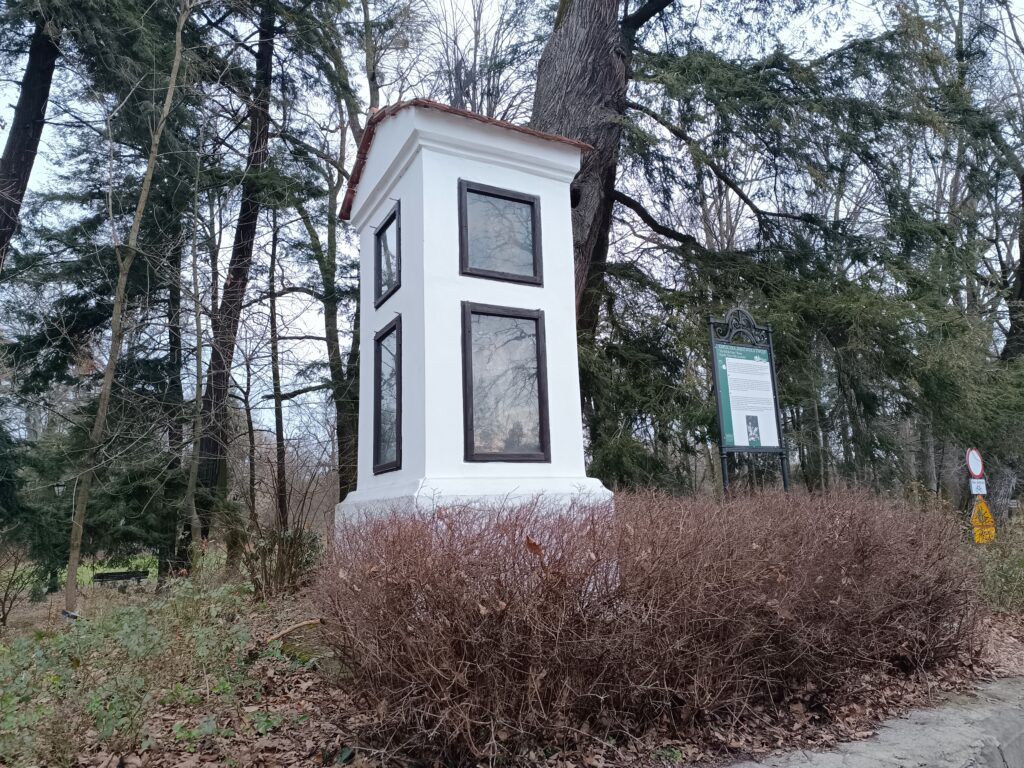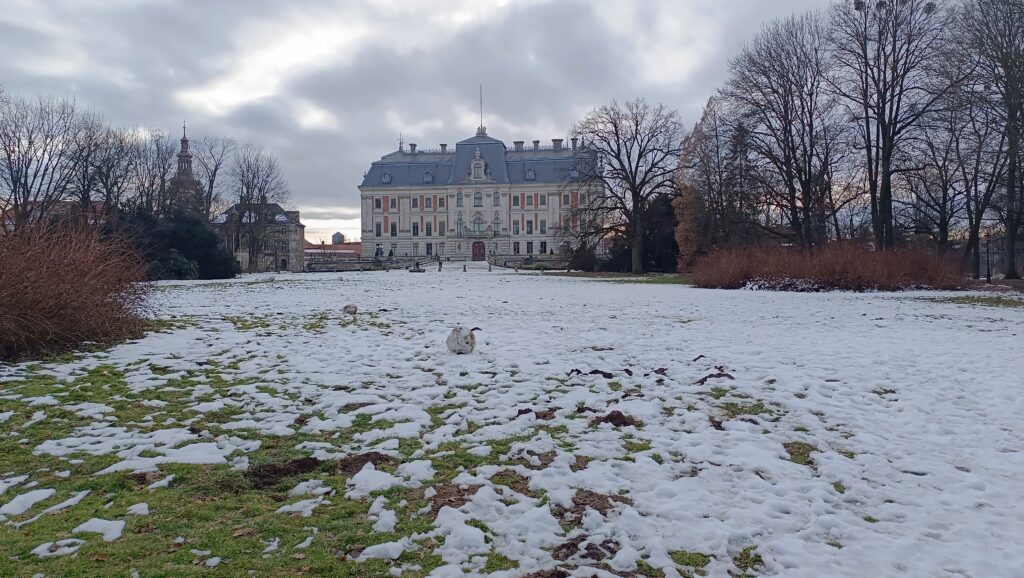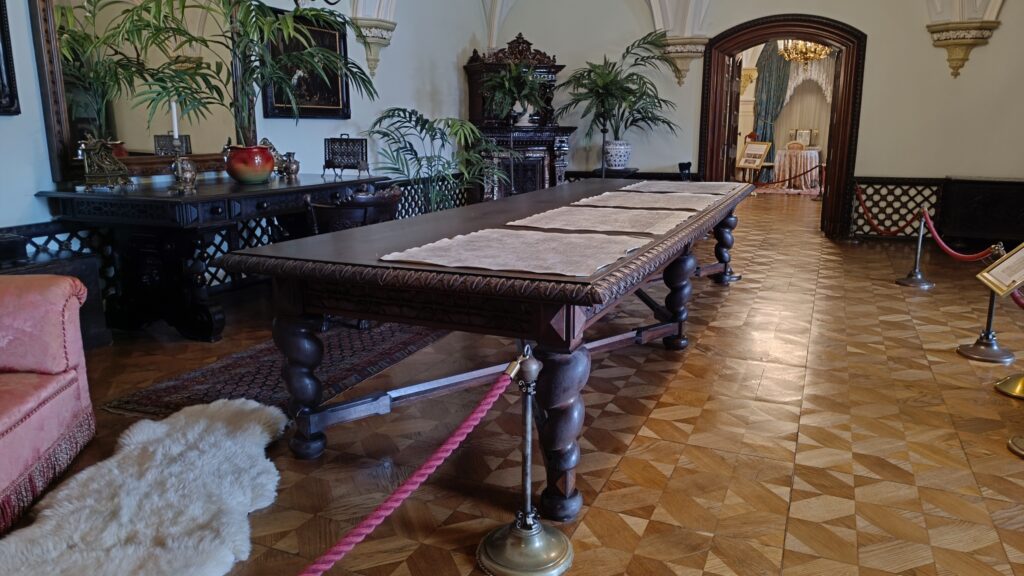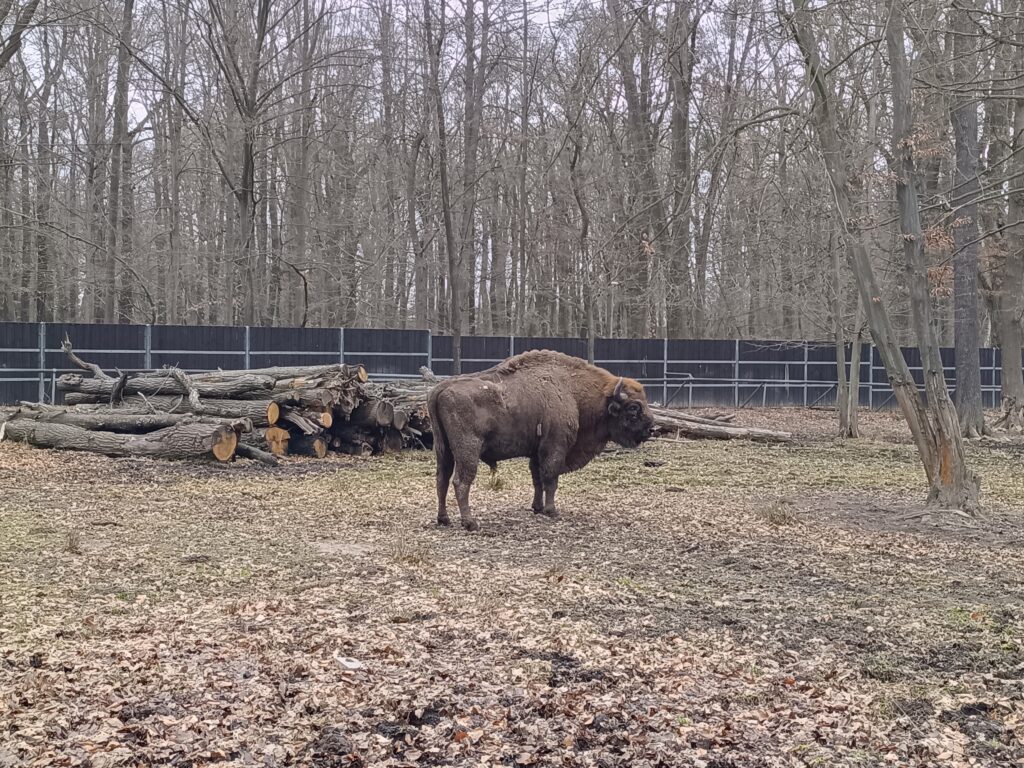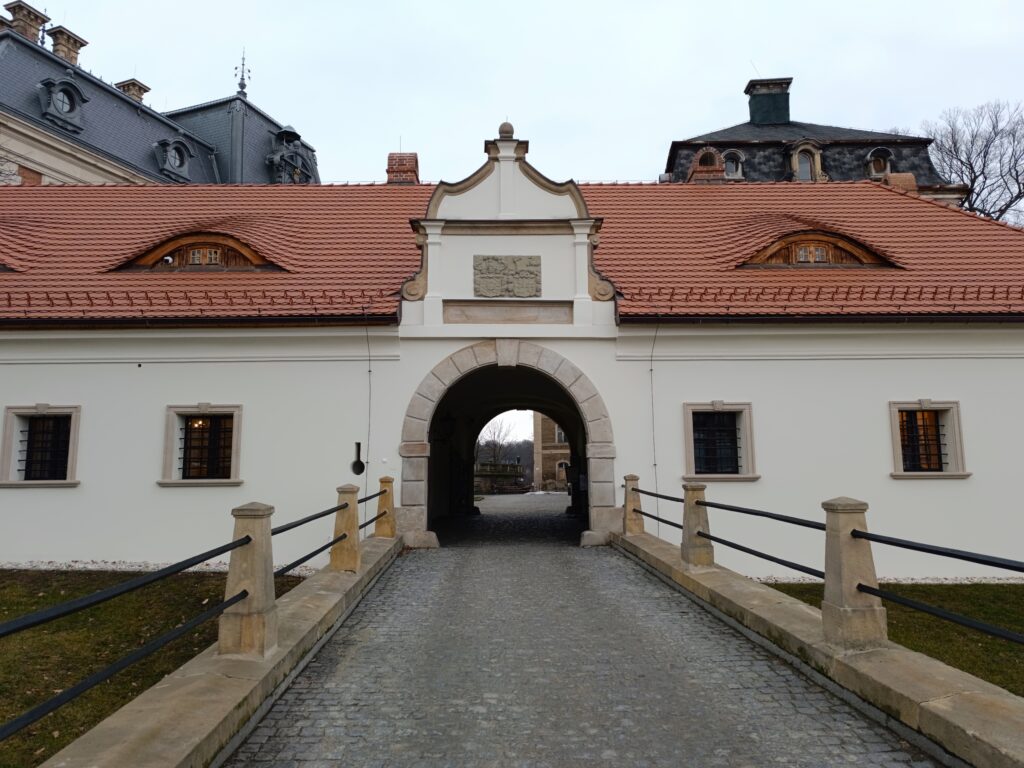All you need to know about the city of
Pszczyna
Poland
Sightseeing
Pszczyna is a true hidden gem of Silesia. The local castle impresses with its original, well-preserved interior—an exceptional rarity on a European scale. The expansive parks surrounding it, combined with historic architecture, give the town a truly one-of-a-kind atmosphere.
Curiosities
Pszczyna served as a source of inspiration for one of the most outstanding musicians of the 18th century. According to legend, it was here that a fleeing Polish king was stopped. And Pszczyna also... saved Poland’s bison population?
History
The history of Pszczyna stands out among the towns that surround it. Until World War II, it was ruled by local dukes who actively supported the development of architecture, art, and music.
CONTENTS
SIGHTSEEING
Castle Museum in Pszczyna
Admission: Palace halls – 38 PLN regular, 22 PLN reduced; Armoury – 10 PLN regular, 8 PLN reduced; Additional exhibitions – 10 PLN regular, 8 PLN reduced
It is estimated that the first Piast castle in Pszczyna was built as early as the 12th century. However, after numerous reconstructions, its medieval character faded, giving way to a 19th-century Neo-Baroque palace, which until recently belonged to the von Pless princes. Today, it functions as a museum and is considered one of the most valuable examples of residential architecture in Poland. It is also counted among the seven architectural wonders of Silesia. Visitors can explore its richly decorated halls with the help of an audio guide that provides insight into the history and purpose of the original objects on display.
For an additional fee, guests can visit the armoury, which showcases a diverse collection of weaponry—both European and Far Eastern. The museum also hosts special exhibitions such as Known and Unknown and the Portrait Gallery, offering a deeper look into the history of the noble family and the residence itself. Another option is to purchase a ticket for a temporary exhibition held in the Prince’s Stables, which now serve as an art gallery.
European Bison Reserve
Admission: 26 PLN regular, 20 PLN reduced (combined ticket with the Pszczyna Village Farmstead: 36 PLN regular, 28 PLN reduced)
The Bison Reserve is one of the most interesting attractions in the Pszczyna park. In addition to the main attraction — the bison — visitors can also see other animals such as deer, roe deer, and fallow deer. It’s worth asking about feeding times before entering, as that’s the best opportunity to see these majestic creatures up close. The site also features a small museum where you can learn more about the local wildlife.
Pszczyna Village Farmstead
Admission: 20 PLN regular, 16 PLN reduced (combined ticket with the Bison Reserve: 36 PLN regular, 28 PLN reduced)
Located in the Park Dworcowy, the open-air museum Pszczyna Village Farmstead showcases a dozen or so historic wooden buildings. In addition to barns and sheds, the most notable structures include a watermill and an 18th-century manor granary. Many of the buildings are open to visitors, and sound effects simulating everyday activities give the place a truly unique atmosphere.
Museum of Silesian Military History – Gardener’s House
Admission: Free
This small museum is perfect for history enthusiasts. It features exhibitions ranging from the Neolithic period to modern times. The average visit takes about 30–45 minutes, and guided tours are available upon prior arrangement.
Church of All Saints
Admission: Free
This is the oldest church in the city, first mentioned in the 14th century. It suffered severe damage in a fire during the 18th century and was almost entirely rebuilt afterward. Interestingly, beneath the church lie sarcophagi of the former rulers of Pszczyna from the von Promnitz dynasty. Thirteen such sarcophagi have been discovered, dating back to the 16th–17th centuries. In 2023, they were on display at the Castle Museum, but efforts are currently underway to adapt the church’s underground chambers for public viewing.
The Church of All Saints also serves as a concert hall, hosting organ performances, Lenten and Christmas concerts.
Evangelical-Augsburg Church
Admission: Free
This ornate church, featuring a decorative portal and columns, was the first Lutheran church in Pszczyna. It was built in the 18th century thanks to the efforts of the von Promnitz family. Inside, there is an altar with a painting of the Ascension of Jesus. Opposite the pulpit, one can find the coat of arms of the von Hochberg family, who later became the rulers of Pszczyna.
Market Square in Pszczyna
Admission: Free
This is the heart of the town. Nearly all major landmarks—such as the Castle Museum and Pszczyna’s churches—are located near the square. Also worth mentioning is the historic Town Hall, dating back to the 17th century. It has undergone several reconstructions and currently features a Renaissance style. The Market Square also hosts local events, including concerts, and during winter, an ice rink operates there.
CURIOSITIES
On the Brink of Extinction
Bison are animals typically associated with the eastern forests of Poland. So how did a bison end up in the park in Pszczyna, and how did it help save its entire species? It all began back in 1865, when Prince Hans Heinrich XI Hochberg von Pless traded 20 deer for 4 bison from the Białowieża Forest. They were brought to Pszczyna for hunting purposes, as the Hochberg family were passionate hunters, and their hunting events were famous throughout Prussia—even attended by reigning monarchs of the time. The bison adapted well in Pszczyna and, remarkably, have survived in the local park for over 150 years.
However, the Białowieża Forest wasn’t as lucky. After World War I, the bison population there was wiped out due to poaching and wartime devastation in eastern Poland. Attempts were made to restore the population by bringing in bison from abroad—but without success. It was then discovered that three bison still lived in Poland, specifically in the Pszczyna park. Thanks to these survivors, the population in eastern Poland was revived. Today, the number has grown to around 2,000, meaning that Poland is now home to 25% of the world’s bison population.
A Jewel of Silesian Architecture
The inclusion of the Pszczyna Castle on the list of the 7 Architectural Wonders of the Silesian Voivodeship is a rare distinction—and well worth mentioning again. The contest was held in 2009 and attracted tens of thousands of voters. Pszczyna Castle stood proudly alongside landmarks such as the Spodek Arena in Katowice and the Tychy Brewery, distinguishing itself among 76 nominated sites.
Remarkably, the castle has preserved around 80% of its original 19th and 20th-century furnishings, making it one of the few castles in all of Europe that has retained its historic interior.
Legacy of the Princess of Pszczyna
One of the most fascinating figures associated with Pszczyna is Princess Daisy Hochberg von Pless. This British-born aristocrat settled in Pszczyna after her marriage and left a lasting legacy through her charitable work. She organized benefit concerts, Christmas parties for the poor, and opened a school for children with disabilities. Thanks to her initiative, a river in Wałbrzych was cleaned, and working mothers there were given free rations of pasteurized milk for their infants. She frequently challenged the system to improve the lives of ordinary people.
When World War I broke out, she immediately joined the Red Cross as a nurse. Sadly, her health deteriorated in the 1930s. Due to her British origins, she was suspected of espionage and forced by the Nazis to move to Wałbrzych, where she had to report daily to the authorities. Despite her illness, she continued helping others by sending food packages to concentration camp prisoners. She died in 1943 and was buried in Książ.
After the fall of communism, Princess Daisy’s story returned to the spotlight through films and television series. In Pszczyna, the Daisy Days festival is held annually from May 23rd to 25th, featuring concerts, lectures, and various performances. Another way she is commemorated is through Herbaciarnia Daisy (Daisy’s Teahouse), a picturesque 19th-century pavilion in Pszczyna Park. Visitors can enjoy tea or coffee there—and interestingly, it once served the aristocracy and is old enough that Princess Daisy herself may have once sipped tea there.
In the Footsteps of the First Elected King’s Escape
One of the local legends is tied to an unassuming roadside shrine on the outskirts of the Pszczyna Park. Most likely dating back to the 18th century, it commemorates the first elected king of Poland. The story takes place in the 16th century, following the childless death of the last Jagiellon, when the Polish nobility was debating who should ascend to the throne. Their choice fell on the young Henry of Valois, a French prince. However, Henry turned out to be a poor candidate—he wasn’t interested in Polish politics, didn’t understand local traditions, and didn’t even speak the language.
So, when his brother died and the French throne became vacant, Henry fled Kraków, eager to claim power in France. The Polish nobility immediately set out after him. According to legend, it was near the border of Pszczyna that the royal chamberlain caught up with him and pleaded for the king to return to Wawel. Henry is said to have uttered only the words “Thy will be done!” (Bądź Wola Twoja!) and continued westward. Today, a small chapel known as the Bądź Wola Twoja shrine stands at that very spot.
Where Telemann Met the Mazurka
For years, Pszczyna has hosted an event known as Evenings with Telemann—an international music festival dedicated to the memory of the famous German composer. Georg Philipp Telemann, who lived at the turn of the 17th and 18th centuries, composed over 3,000 works and enjoyed widespread fame across Europe. Some even claim he was more popular than Bach himself.
Telemann was fascinated by folk music, especially its Polish variety. Because of this passion, he spent a great deal of time in Pszczyna, where he served as the court music director for the Counts of Promnitz. The town became a significant place for him, repeatedly inspiring his compositions.
The Castle That Sank the Reich
Few people know that one of the key decisions that contributed to the defeat of Germany and Austria-Hungary in World War I was made right in Pszczyna. In 1917, a strategic military conference was held in what is now the Castle Museum—specifically, in its oval office—with the participation of Emperors Wilhelm II and Charles I.
Wilhelm II, the leader of Germany, announced the start of unrestricted submarine warfare. The goal was to cut off supply routes to Britain and France. However, this also put American ships in the crosshairs. As a result, anti-German sentiment surged in the United States, and just three months later, the U.S. entered the war on the side of the Allies—a move that ultimately tipped the balance in their favor.
HISTORY
Pszczyna — a town with many roots
The origin of the name “Pszczyna” remains a subject of debate. One theory suggests that it derives from the word plszczyna, meaning wetlands rich in rivers and backwaters. Another hypothesis assumes that the town’s name comes from the Błszczynka River, whose name eventually evolved into Pszczynka. The word błszczynka might have originally meant “shiny” or “gleaming.”
It was once believed that the castle and the town were established as early as the 11th century. Nowadays, however, the beginnings of Pszczyna are dated to the early 14th century. At that time, it was located within the borders of the Duchy of Opole and Racibórz, which had been formed as a result of the fragmentation of the Polish kingdom. For a long time, its history was closely tied to the nearby town of Racibórz.
The woman who changed Pszczyna
A key moment in the history not only of Pszczyna but of the entire region of Silesia was the act of homage paid to the King of Bohemia by the Silesian dukes in 1327. This event marked the definitive separation of Silesia from Poland and its transition under the sovereignty of Bohemia.
A few years later, following the death of the Duke of Racibórz without an heir, it was the King of Bohemia who appointed his successor. In this way, the Přemyslid dynasty came to power in the Duchy of Racibórz, playing a pivotal role in the history of Pszczyna.
The most significant period was the rule of John II the Iron. In 1407, he established the first Duchy of Pszczyna and entrusted it to his wife, Helena Korybutówna—the first Duchess of Pszczyna. Helena took her role seriously—thanks to her, the Pszczyna Castle was built, the town was surrounded by earthen ramparts, and a moat was dug. As duchess, she was also actively involved in diplomacy, maintaining relations with other duchies.
The Birth of the Free State Lordship
The death of Helena plunged the duchy into chaos. Due to various intrigues, it changed hands several times until it was eventually purchased by Casimir II, Duke of Cieszyn. The town owes him, among other things, the restoration of its municipal rights. He was the last Piast ruler of the town, as in 1517 he decided to sell it to the Thurzo family.
This marked the creation of the Free State Lordship of Pszczyna. Since the lands of Silesia had already been incorporated into the Holy Roman Empire, Pszczyna was regarded as part of Germany.
However, this did not stop further transactions involving the state. In 1548, it was purchased by Balthasar Promnitz. The Promnitz family, originating from Wrocław, was one of the wealthiest in Silesia, and it was with them that the future of Pszczyna became closely tied.
Protestants and Catholics
Just a few years after the Promnitz family took power, Lutheranism was introduced in Pszczyna. The conversion of the population was not always peaceful—coercion was sometimes used. By the end of the 16th century, most churches within the lands of Pszczyna were already in Protestant hands.
The early 17th century marked the period of the Thirty Years’ War—a major conflict between Protestants and Catholics that engulfed nearly all of Europe. Pszczyna did not escape destruction and was repeatedly ravaged by various armies.
During this time, the castle also underwent reconstruction. Although it had already been given a Renaissance style in the 16th century, its present-day appearance took shape between 1629 and 1636. At that point, the castle’s role shifted from a defensive stronghold to a representative residence.
Music, Theatre, and Politics
The following hundred years brought Pszczyna a period of peace and development. At the end of the 17th century, Erdmann II Promnitz came to power and rebuilt the town after the devastation of war. It was he who constructed the Gate of the Elect—the oldest surviving part of the castle still in its original form.
At that time, the rulers of Pszczyna maintained close ties with the Polish–Lithuanian Commonwealth. This was due to the Saxon Wettin dynasty, which had ascended to the Polish throne. Erdmann II became a minister of the Secret Cabinet of King Augustus II the Strong—the body responsible for managing Saxony’s political affairs.
Culture flourished in the town. The court’s Kapellmeister was Georg Philipp Telemann, one of the most outstanding composers of the Baroque era. A library existed, theatrical performances were held, and lavish hunting events were organized.
Pszczyna in the Fire of Change
Everything changed in 1741. It was the time of the Silesian Wars, during which the rising power of Prussia attempted to seize Silesia, which until then had been under the influence of the Austrian Habsburgs. The success of Prussia came as a surprise even to its king, who had originally intended to occupy only Lower Silesia. The successful campaign, however, ended with the annexation of Upper Silesia as well.
Despite the change in overlordship, the Prussians left Pszczyna in the hands of the local princes. Regardless, Jan Erdmann von Promnitz died without an heir, leaving Pszczyna to a related dynasty — the House of Anhalt-Köthen. It was at their initiative that the status of Pszczyna was elevated from a Free State Lordship to that of a duchy. This was a wealthy dynasty that actively developed the region — they built two manor houses nearby and established a health resort, following the example of other aristocratic families in Europe.
They ruled Pszczyna until 1846, when the last duke passed the Pszczyna lands to his nephew from the von Hochberg family — known for Książ Castle and the region of Wałbrzych. The Hochbergs were also among the wealthiest noble families in the German Empire. They soon began styling themselves von Pless — as lords of Pszczyna.
The Capital of the Polish Word
It is worth emphasizing that despite being under German influence for many years, Pszczyna retained its Polish character. In 1828, more than half of the town’s residents declared themselves as Polish. Although by 1865 this number had significantly decreased, the Polish language still prevailed throughout the duchy. Even in 1910, as many as 86% of the county’s inhabitants declared they spoke Polish, while only 67% reported using German.
The 19th century was a time of further development for the town. As early as 1805, the first printing house was established. Soon after, the press began to flourish — in 1845, the first Polish-language periodical in Upper Silesia appeared: Tygodnik Polski Poświęcony Włościanom (The Polish Weekly Devoted to Peasants). It was soon followed by Przyjaciel Ludu (The People’s Friend), also published in Polish.
A Vote for Poland
During World War I, Pszczyna served as the imperial headquarters and the seat of the German military command. As history shows, Germany lost the war, and the Second Polish Republic re-emerged on the map of Europe, reigniting the debate over the future of Silesia.
At the time, Prince Hans Heinrich XV initially supported the idea of creating an independent Silesian Republic or Upper Silesian Republic. However, when the Silesian Uprisings broke out, he chose to support the German side, offering his palace to the military—its underground chambers were used to imprison insurgents. The conflict spread to the Pszczyna region, which was largely inhabited by Poles.
In the 1921 plebiscite, the majority of residents voted in favor of joining Poland. Soon after, representatives of the Second Polish Republic entered the town, and administration passed into Polish hands. Hans Heinrich XV accepted Polish citizenship and, in an effort to improve relations with the new government, even referred to his supposed Piast lineage. Nevertheless, he remained in tax disputes with the Polish authorities until the end of his life.
Interestingly, when World War II broke out, both of his sons fought against the Nazis.
Pszczyna’s Journey Through the 20th Century
When German troops invaded Poland in 1939, the Battle of Pszczyna took place in the area. Following the defeat of Polish forces, the army withdrew from the entire Upper Silesia region. During the German occupation, anti-German resistance organizations operated in Pszczyna, carrying out underground activities.
The town was largely spared from wartime destruction. Even in 1945, when Soviet troops entered Pszczyna, no battles occurred there—the German forces had already retreated.
After the war, the estates of the Pszczyna princes were nationalized. As early as 1946, the Pszczyna Castle was opened to the public, with its interiors hosting the first museum exhibitions. Shortly after the war, anti-Soviet resistance groups also operated in the region, but lacking Western support, their efforts had little impact on local history.
Today, Pszczyna is known as the jewel of Upper Silesia. The Pszczyna Castle is one of the few in Europe that has preserved most of its original furnishings. It stands as one of the region’s most important cultural landmarks and attracts tourists from all over Poland and beyond.
Oko na Świat © Artur Gołębiowski







